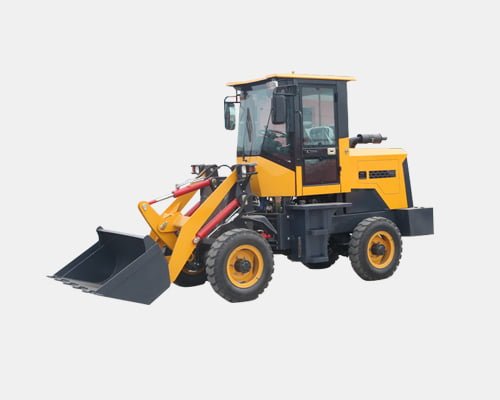Introduzione

In the realm of construction and landscaping, mini escavatori have become indispensable tools. Their compact size and versatile functionality make them ideal for various tasks, from digging trenches to demolishing structures. However, with numerous models available in the market, choosing the right one can be daunting. In this comprehensive guide, we’ll delve into the top mini excavators, comparing their performance and value to help you make an informed decision.
Understanding the Importance of Mini Excavators in Construction
Mini excavators have revolutionized the landscape of construction projects, offering unprecedented levels of efficiency, versatility, and convenience. These compact yet powerful machines have become indispensable tools across various industries, transforming the way tasks are undertaken on construction sites, landscaping projects, utility installations, and beyond.
Their significance lies not only in their ability to perform traditional excavation tasks but also in their adaptability to a wide range of applications. From digging trenches and foundations to lifting heavy materials, clearing debris, and even operating specialized attachments like augers and hydraulic breakers, mini excavators excel in multitasking with precision and ease. Their compact size enables them to navigate tight spaces and work in confined areas where larger equipment would struggle to access. As such, mini excavators have become a cornerstone of modern construction practices, empowering contractors and operators to accomplish tasks more efficiently, safely, and cost-effectively than ever before.
| Applicazioni | Tasks |
|---|---|
| Siti di costruzione | Excavation, Foundation Digging |
| Progetti paesaggistici | Clearing, Grading, Tree Planting |
| Utility Installations | Trenching, Pipe Installation |
| Demolition Projects | Debris Clearing, Structure Demolition |
Key Features to Consider When Comparing Mini Excavators
To effectively compare mini excavators, it’s crucial to understand the key features that determine their performance and value. We’ll discuss factors such as horsepower, digging depth, operating weight, and attachment compatibility.
By considering these key features in our comparison, we can provide readers with comprehensive insights into the performance, capabilities, and suitability of each mini excavator model, empowering them to make informed decisions based on their project requirements and budget constraints.
Comparative Analysis of Top Mini Excavator Models
In this section, we embark on an extensive examination of the leading mini excavator models available today, encompassing renowned brands like Caterpillar, Kubota, and Bobcat. Our objective is to delve deeply into the intricacies of each model, scrutinizing their specifications, performance capabilities, and overall value proposition. By dissecting these aspects, we aim to provide readers with a comprehensive understanding of the strengths and weaknesses inherent in each machine, allowing for a nuanced comparison that goes beyond mere surface-level observations. Through meticulous analysis and comparison, we endeavor to unearth valuable insights that will aid readers in making well-informed decisions when selecting the ideal mini excavator for their specific needs and preferences.
Performance Testing and Evaluation

To guarantee the precision of our comparison, we meticulously carried out performance evaluations on a carefully curated selection of mini excavators. Our methodology involved subjecting each machine to a battery of rigorous tests, meticulously designed to assess various critical aspects of their operation. These tests encompassed a comprehensive analysis of digging efficiency, maneuverability in different terrains and working conditions, as well as fuel consumption rates under varying loads and operating scenarios. By meticulously documenting and scrutinizing the results of these tests, we aim to provide readers with a detailed and nuanced understanding of each mini excavator’s performance characteristics.
Value Assessment: Balancing Cost with Features
While performance undoubtedly plays a pivotal role, the true measure of a mini excavator’s worth lies in its cost-effectiveness. Beyond the initial investment, it’s essential to assess how well the machine’s features and performance align with its price tag. Our analysis delves into this crucial aspect, meticulously scrutinizing the pricing of each model relative to its capabilities. We take into account not only the upfront cost but also factors such as ongoing maintenance expenses, fuel efficiency, and potential resale value.
Conclusione
Choosing the right mini excavator involves careful consideration of various factors, including performance, value, and specific project requirements. By comparing top models based on our analysis, you can make a well-informed decision that maximizes efficiency and productivity on your construction site.
Domande frequenti
What is the typical lifespan of a mini excavator?
The lifespan of a mini excavator can vary depending on factors such as usage, maintenance, and environmental conditions. However, with proper care and regular maintenance, mini excavators can last anywhere from 5,000 to 10,000 operating hours or more.
Can mini excavators be used for residential landscaping projects?
Yes, mini excavators are commonly used for various residential landscaping tasks, including digging trenches, grading land, installing drainage systems, and removing stumps. Their compact size and maneuverability make them ideal for navigating tight spaces typically found in residential areas.
How do I determine the right size of mini excavator for my project?
When selecting a mini excavator size for your project, consider factors such as the depth and width of the trenches or holes you need to dig, the weight of materials you’ll be moving, and the accessibility of the work area. It’s also essential to consult with equipment experts or dealers who can provide guidance based on your specific requirements.
